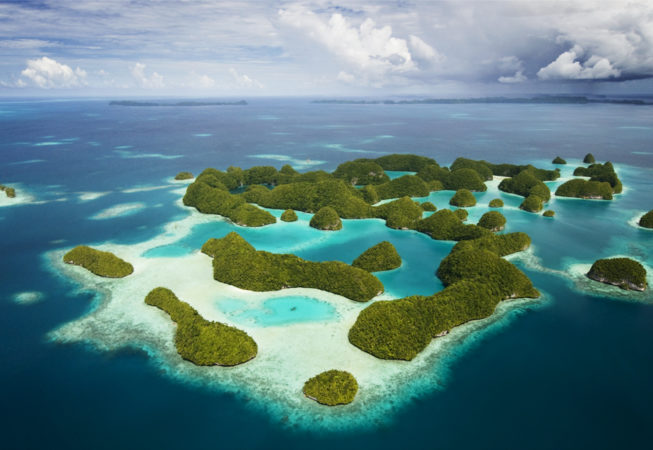The Rock Islands of Palau, also called Chelbacheb, are a small collection of limestone or coral uprises, ancient relics of coral reefs that violently surfaced to form Islands in Palau’s Southern Lagoon, between Koror and Peleliu, and are now an incorporated part of Koror State. There are between 250 to 300 islands in the group according to different sources, with an aggregate area of 47 square kilometres (18 sq mi) and a height up to 207 metres (679 ft). They are a World Heritage Site since 2012.
The islands are sparesly populated and are famous for their beaches, blue lagoons and the peculiar umbrella-like shapes of many of the islands themselves. The Rock Islands and the surrounding reefs make up Palau’s popular tourist sites such as Blue Corner, Blue hole, German Channel, Ngermeaus Island and the famed Jellyfish Lake, one of the many Marine lakes in the Rock Islands that provides home and safety for several kinds of stingless jellyfish found only in Palau. It is the most popular dive destination in Palau, and offers some of the best and most diverse dive sites on the planet. From wall diving to high current drift dives, from Manta Rays to sharkfeeds in shallow and colorful lagoons, to brilliantly decorated caves and overhangs.
Many of the islands’ display a mushroom-like shape with a smaller base at the intertidal notch than what lies above it. The indentation comes from erosion and from the dense community of sponges, bivalves, chitons, snails, urchins and others that graze mostly on algae.
I tool these aerial shots were taken from a helicopter where we flew in between the canyons of the Rock Islands. It was as stuning a scene as I have ever seen.

